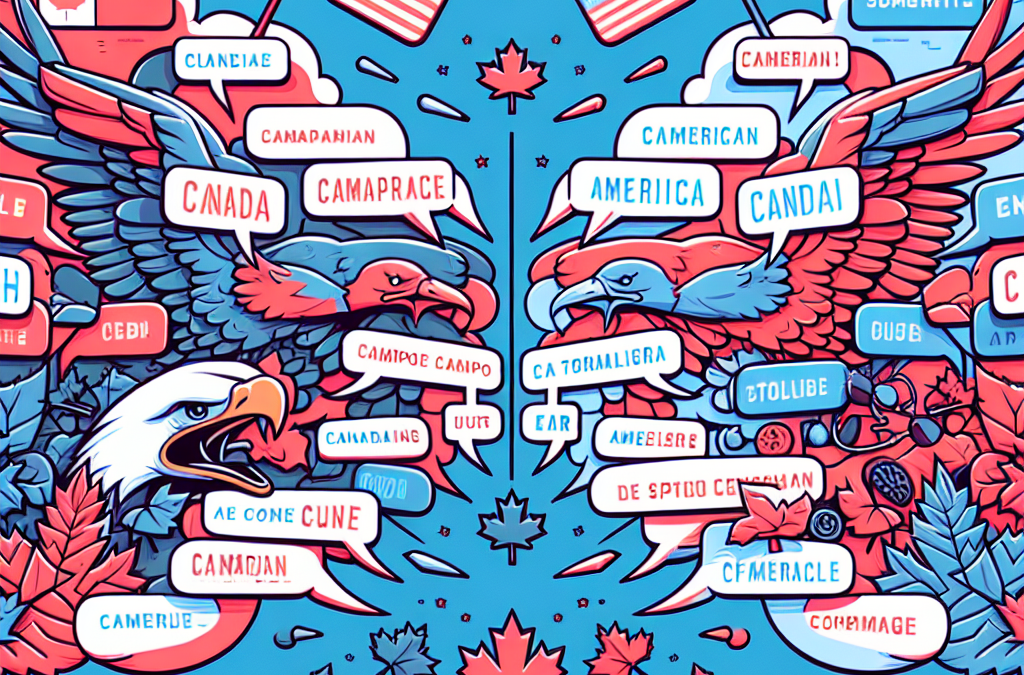When it comes to digital marketing, understanding regional language differences is crucial for global reach and effective communication. Just as it’s important for businesses like digital marketing agency to tailor their strategies to specific audiences, it’s also intriguing to explore how language varies across regions — specifically between Canada and the United States.

In the world of digital marketing and online engagement, knowing these nuances can be the key to connecting with your audience on a deeper level. Explore our digital marketing services to see how we can help you bridge the linguistic divide and optimize your content for Canadian and American audiences alike.
Introduction to Canadian and American English
Despite sharing a vast border and many cultural similarities, Canada and the United States have developed unique varieties of English. These variations include pronunciation, spelling, and vocabulary differences. Exploring these distinctions not only enriches our understanding of the English language but also enhances our communication skills in business and everyday scenarios.
Diving into Vocabulary Differences
One of the most noticeable differences between Canadian and American English is the vocabulary. Many common items and concepts have entirely different names depending on which side of the border you’re on. Understanding these differences is not just a linguistic curiosity but also a practical necessity for marketers, writers, and communicators aiming to reach audiences in both countries effectively.
Commonly Different Words in Canadian and American English
From the culinary world to the great outdoors, and down to everyday items, here are some notable examples where Canadian and American vocabularies diverge:
- Zed vs. Zee: Perhaps one of the most famous differences, Canadians pronounce the last letter of the alphabet as “zed,” while Americans say “zee.”
- Toque vs. Beanie: In Canada, a knit cap worn in the winter is called a “toque,” whereas in the U.S., it might be referred to as a “beanie.”
- Chesterfield vs. Couch/Sofa: This term for a sofa or couch is traditionally Canadian, though its usage is declining in favor of the more universally understood “couch” or “sofa.”
- Washroom vs. Bathroom: Canadians prefer “washroom,” especially when referring to public toilets, whereas Americans typically use “bathroom.”
- Poutine vs. Fries with Gravy and Cheese: This beloved Canadian dish, consisting of fries topped with cheese curds and gravy, doesn’t usually go by a specific name in the U.S.
- Hydro vs. Electricity: In Canada, “hydro” refers to electricity, a vestige of the extensive use of hydroelectric power. In the U.S., people just say “electricity.”
- Runners vs. Sneakers: Athletic shoes are referred to as “runners” in Canada and “sneakers” in the U.S.
- Loonie (and Toonie) vs. Dollar (and Two Dollar Coin): The Canadian one-dollar coin is affectionately called a “loonie,” a reference to the loon depicted on it. The two-dollar coin follows this logic with “toonie.” In the U.S., these are simply referred to by their value: dollar coin, two-dollar coin.
Why These Differences Matter
For professionals in the field of content creation, marketing, and communication, appreciating and leveraging these linguistic nuances can significantly enhance message resonance and audience connection. For businesses operating in or targeting customers in both Canada and the USA, awareness and sensitivity to these variations can improve customer relations and brand perception.
Leveraging Linguistic Differences in Digital Marketing
Digital marketers, including those at digital marketing agencies, can harness the power of regional language differences to optimize SEO strategies, create more relatable and engaging content, and foster a closer relationship with their audience. By tailoring content to reflect local language preferences, marketers can ensure their message is not only heard but also resonates deeply with their target demographic.
Conclusion: Embracing Linguistic Diversity
Understanding the subtle yet significant differences between Canadian and American English is more than a linguistic exercise — it’s a crucial element of effective communication and marketing strategy. Embracing these differences allows us to connect more authentically with our audiences, enrich our cultural perspectives, and refine our messaging for greater impact.
If you’re aiming to enhance your brand’s appeal across the Canadian and American markets, then Zigma is your digital marketing agency to help you get there.

